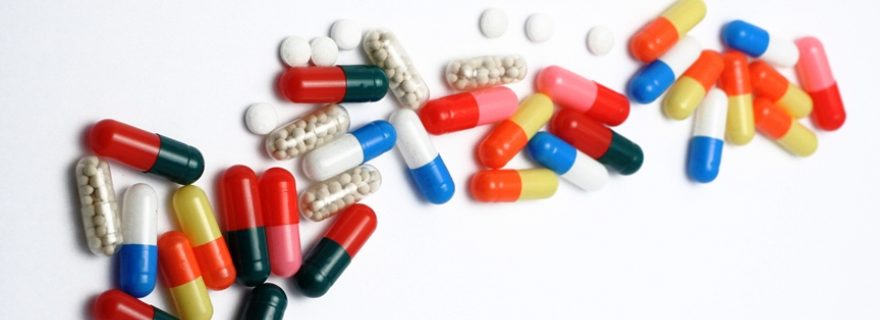Neurotransmitters as food supplements: GABA
You can buy neurotransmitters such as GABA online in the form of food supplements, but how do these products work (if at all)?
Anyone who has ever dabbled into the world of food supplements might have come across them: neurotransmitters in capsule/powder form. These chemicals make up the messages that the cells in your brain send to each other constantly and yet you can readily buy them online. What gives? The thing with food supplements is that manufacturers are not required to provide any evidence supporting the efficacy of their products as long as they make no claims with regards to potential benefits in relation to specific diseases or conditions.
Gamma-aminobutyric acid (GABA) for instance is the main inhibitory neurotransmitter in the central nervous system. Accordingly, GABA is sometimes called the ‘natural calming agent of the brain’. The food supplement version of GABA has received many positive costumer reviews. For example, some consumers claim that they experience reduced anxiety, while others find that GABA helps them sleep.
However, GABA has long been thought to be unable to reach the brain due to the blood brain barrier.1,2,3,4 This barrier serves to protect the brain from toxins that might find their way into the blood. What’s going on here? Do these products rely on a placebo effect? Do they reach the brain after all? Or do they exert an effect on the brain through an indirect route?
There are a number of studies that assess the issue of GABA’s ability to reach the brain1,2,3,4,5,6,7,8,9, but they are often contradictory. Not only that, but these studies employ a wealth of different methods and experimental animals, which makes it particularly hard to tell what is going on. To resolve this issue, studies are needed in which the effect of GABA administration is measured on GABA levels in the human brain.
Alternatively, GABA might have an effect on the brain through the gut. The brain and the gut communicate back and forth through the vagal nerve. Both the stimulation of this nerve as well as the administration of a GABA food supplement resulted in a similar effect on participants’ ability to prioritize and cascade different actions.10,11
There seem to be some promising areas for future research with regards to GABA, but even if the only mechanism of action turns out to be a placebo effect, that isn’t necessarily a bad thing. After all, if the people who use these products experience benefits, who are we to tell them that these supplements are not supposed to work?
References:
1. van Gelder, N. M. & Elliott, K. A. C. (1958). Disposition of γ-aminobutyric acid administered to mammals. Journal of Neurochemistry, 3, 139-143.
2. Roberts, E., Lowe, I. P., Guth, L., & Jelinek, B. (1958). Distribution of γ-aminobutyric acid and other amino acids in nervous tissue of various species. Journal of Experimental Zoology, 138(2), 313-328.
3. Kuriyama, K. & Sze, P. Y. (1971). Blood-brain barrier to h3-γ-aminobutyric acid in normal and amino oxyacetic acid-treated animals. Neuropharmacology, 10, 103-108.
4. Knudsen, G. M., Poulsen, H. E., & Paulson, O. B. (1988). Blood-brain barrier permeability in galactosamine-induced hepatic encephalopathy. Journal of Hepatology, 6, 187-192.
5. Frey, H.-H., & Löscher, W. (1980). Cetyl GABA: Effect on convulsant thresholds in mice and acute toxicity. Neuropharmacology, 19, 217-220.
6. Löscher, W. (1981). Effect of inhibitors of GABA aminotransferase on the metabolism of GABA in brain tissue and synaptosomal fractions. Journal of Neurochemistry, 36(4), 1521-1527.
7. Löscher, W. & Frey, H.-H. (1982). Transport of GABA at the blood-CSF interface. Journal of Neurochemistry, 38(4), 1072-1079.
8. Shyamaladevi, N., Jayakumar, A. R., Sujatha, R., Paul, V., & Subramanian, E. H. (2002). Evidence that nitric oxide production increases γ-amino butyric acid permeability of blood-brain barrier. Brain Research Bulletin, 57(2), 231-236.
9. Al-Sarraf, H. (2002). Transport of 14C-γ-aminobutyric acid into brain, cerebrospinal fluid and choroid plexus in neonatal and adult rats. Developmental Brain Research, 139, 121-129.
10. Steenbergen, L., Sellaro, R., Stock, A.-K., Beste, C., & Colzato, L. S. (2015a). Transcutaneous vagus nerve stimulation (tVNS) enhances response selection during action cascading processes. European Neuropsychopharmacology, 25(6), 773-778.
11. Steenbergen, L., Sellaro, R., Stock, A.-K., Beste, C., & Colzato, L. S. (2015c). γ-Aminobutyric acid (GABA) administration improves action selection processes: a randomised controlled trial. Scientific Reports, 5, doi: 10.1038/srep12770.


0 Comments